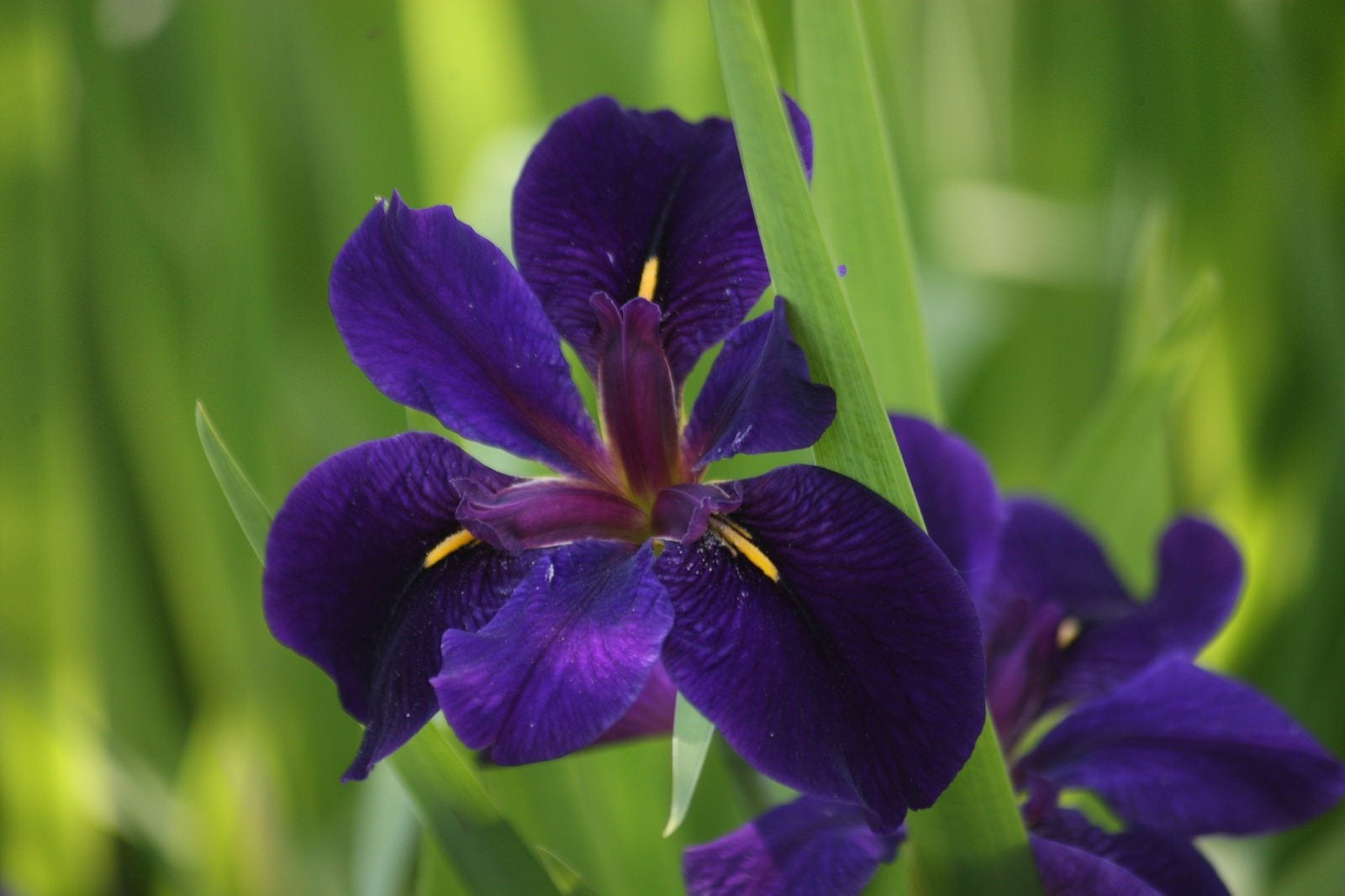Louisiana Iris Information – How To Grow A Louisiana Iris Plant


Louisiana iris has one of the most diverse range of colors of any iris plant. It is a wild plant that occurs in Louisiana, Florida, Arkansas, and Mississippi. As garden plants, these jewel-toned beauties thrive down to USDA zone 6. Healthy rhizomes are the key to growing Louisiana irises, as is moist soil. There are five separate species of this distinctive iris. Read on for some important Louisiana iris information, including growing, site, and care.
Louisiana Iris Information
The name "iris" is derived from the Greek word for rainbow, which is especially applicable with Louisiana iris plants. They come in a host of colors, primarily due to their ability to inbreed amongst the five separate species – Iris fulva, I. brevicaulis, I. nelsonii, I. hexagona, and I. giganticaerulea. In south Louisiana, all of these species occur amongst each other and freely hybridize naturally, resulting in colors not found in any other iris group. There are a few essential tips on growing Louisiana irises, which will result in healthy, beautiful plants in temperate to warm regions. This group of irises is also known as the Louisianans. In the wild they grow in ditches, bogs, roadsides, and any other moist or damp soils. As landscape plants, they thrive near ponds, in aquatic gardens, in containers, and any low area of the garden that retains moisture. The flowers come in rust, blue, purple, yellow, pink, and white as well as combinations of the core colors. Flowers occur on stems of 2 to 3 feet (61-91 cm.) in height. These brilliant flowers range from 3 to 7 inches (8-18 cm.) across and arrive in early spring, just as soil and ambient temperatures are beginning to warm. Leaves are attractive and sword-like. Mature clumps of Louisiana iris plants can span 3 feet wide (91 cm.). The foliage is persistent in warmer regions, adding architectural interest to the rain garden or consistently moist beds.
How to Grow a Louisiana Iris Plant
Irises grow from rhizomes, specially adapted underground stems. The Louisianans prefer a soil pH of 6.5 or lower and rich, moist soil. This variety of iris can also perform well in poor or even clay soil. Choose an area of the garden where the plants will receive at least six hours of sunlight and set out rhizomes in late summer or fall. In beds that tend to dry out, amend the area to a depth of 8 inches (20 cm.) with compost. Plant the rhizomes shallowly, with the top just barely visible above soil. Ensure the rhizomes stay moist or even boggy. Feed in early spring with compost tea or diluted fish fertilizer. In water gardens or at pond edges, it may be useful to try growing Louisiana iris in containers. Ensure they have wide drainage holes and situate the pot in the water.
Louisiana Iris Care
In regions that can expect sustained freezes, apply an organic mulch around the rhizomes. This can also prevent sunscald of rhizomes in hot summers. After spring blooms are spent, cut back the stalks, but allow the foliage to persist. One of the more important aspects of Louisiana iris care is water. These plants cannot be allowed to dry out and in raised beds, containers, or dry sites supplemental irrigation should be applied frequently enough that soil is consistently wet. Divide Louisiana iris in late summer. Division will revive old stands of the plant. Dig up the entire rhizome cluster and locate the rhizomes with green tips. These are the shoots that will grow the next season. Separate these from the old rhizomes. Replant the new rhizomes immediately, either in the bed or into containers.
Gardening tips, videos, info and more delivered right to your inbox!
Sign up for the Gardening Know How newsletter today and receive a free copy of our e-book "How to Grow Delicious Tomatoes".

Bonnie Grant is a professional landscaper with a Certification in Urban Gardening. She has been gardening and writing for 15 years. A former professional chef, she has a passion for edible landscaping.
-
 Terrifically Tubular Flowers For Hummingbirds: 9 Tube-Flowered Plants To Attract Hummers
Terrifically Tubular Flowers For Hummingbirds: 9 Tube-Flowered Plants To Attract HummersGrowing tubular flowers for hummingbirds helps you create the optimum feeding conditions for your winged friends. Here are nine tubed delights for hummers
By Tonya Barnett
-
 How To Grow Hydroponic Tomatoes For Fresh Indoor Harvests – No Soil Required
How To Grow Hydroponic Tomatoes For Fresh Indoor Harvests – No Soil RequiredLearning how to grow tomatoes in water is easy and allows you to harvest fresh-home-grown produce in every season without any mess.
By Ellen Wells